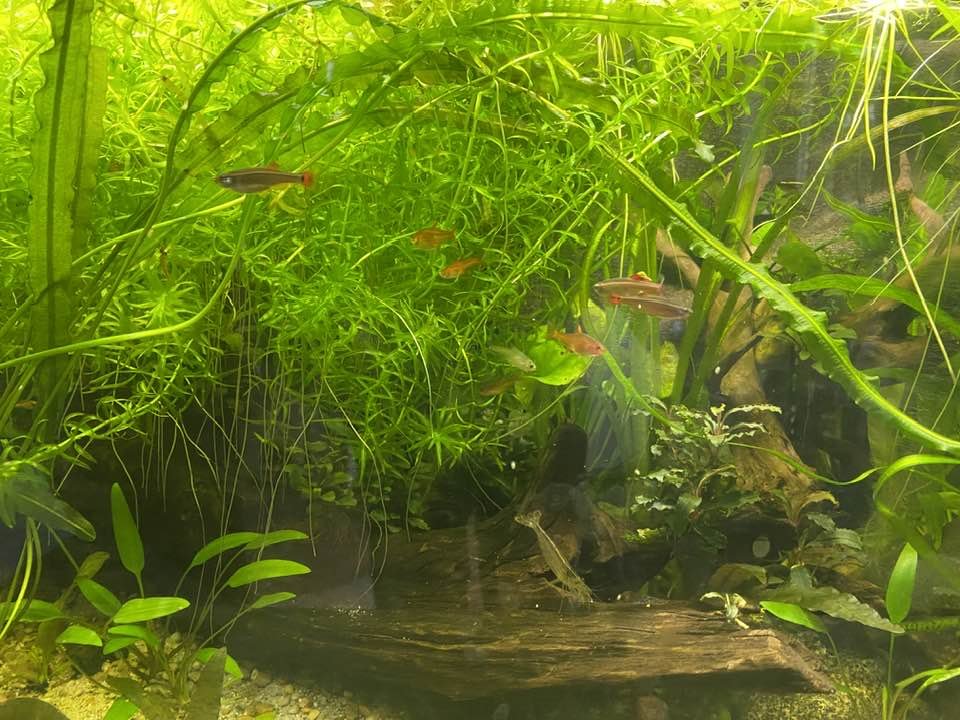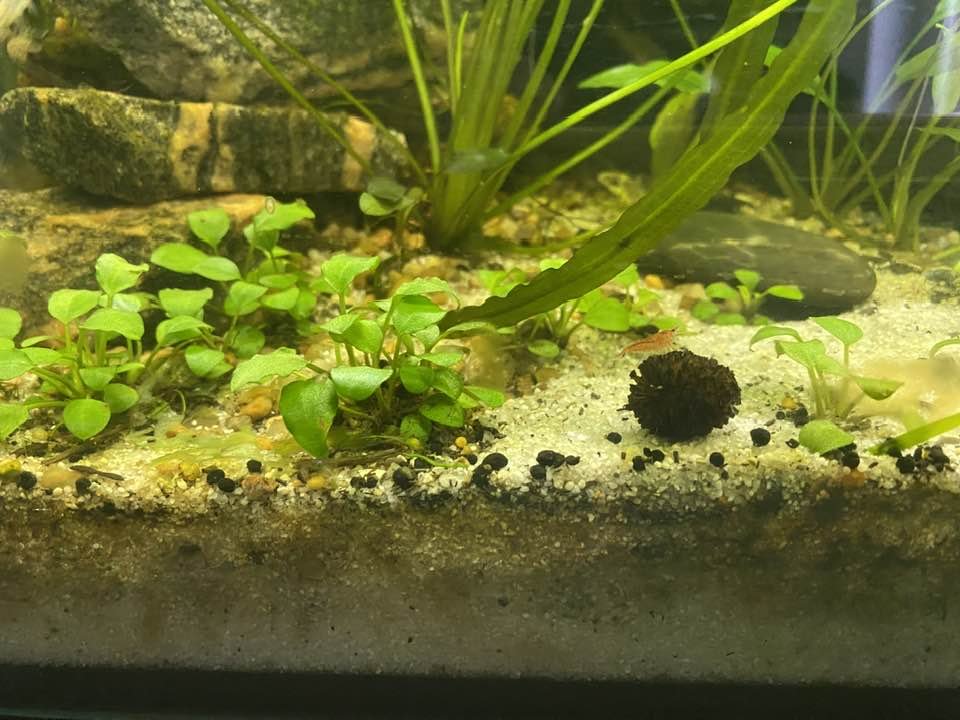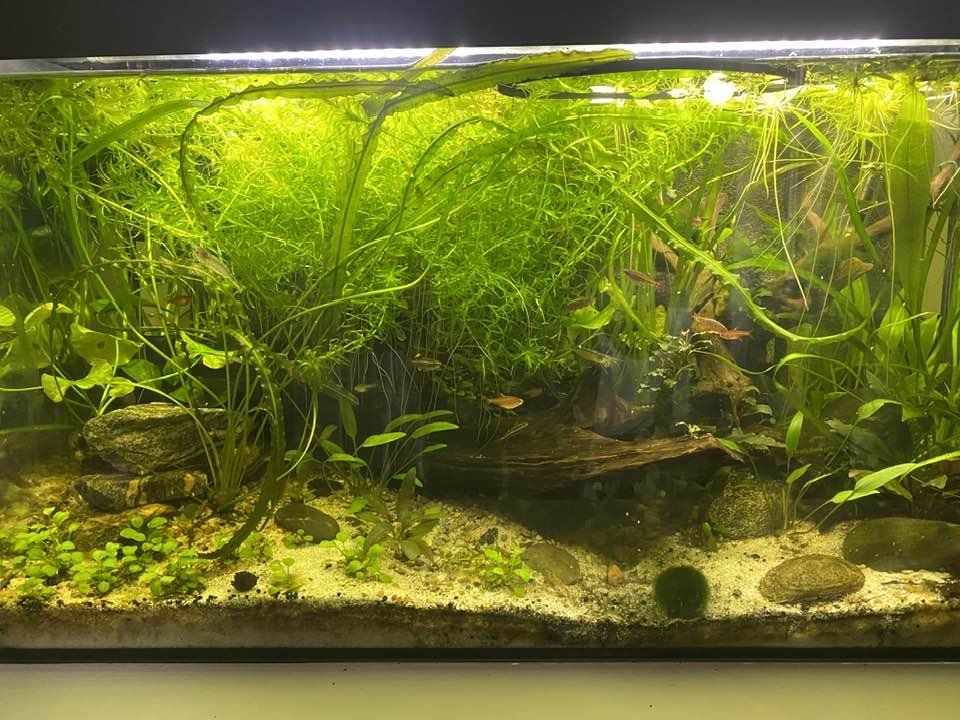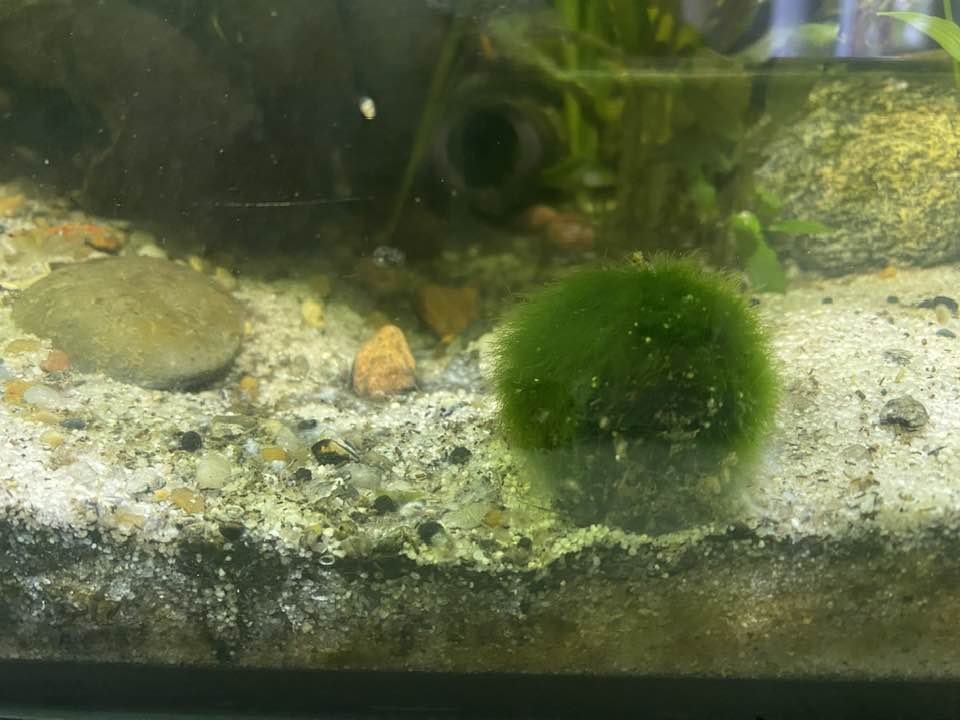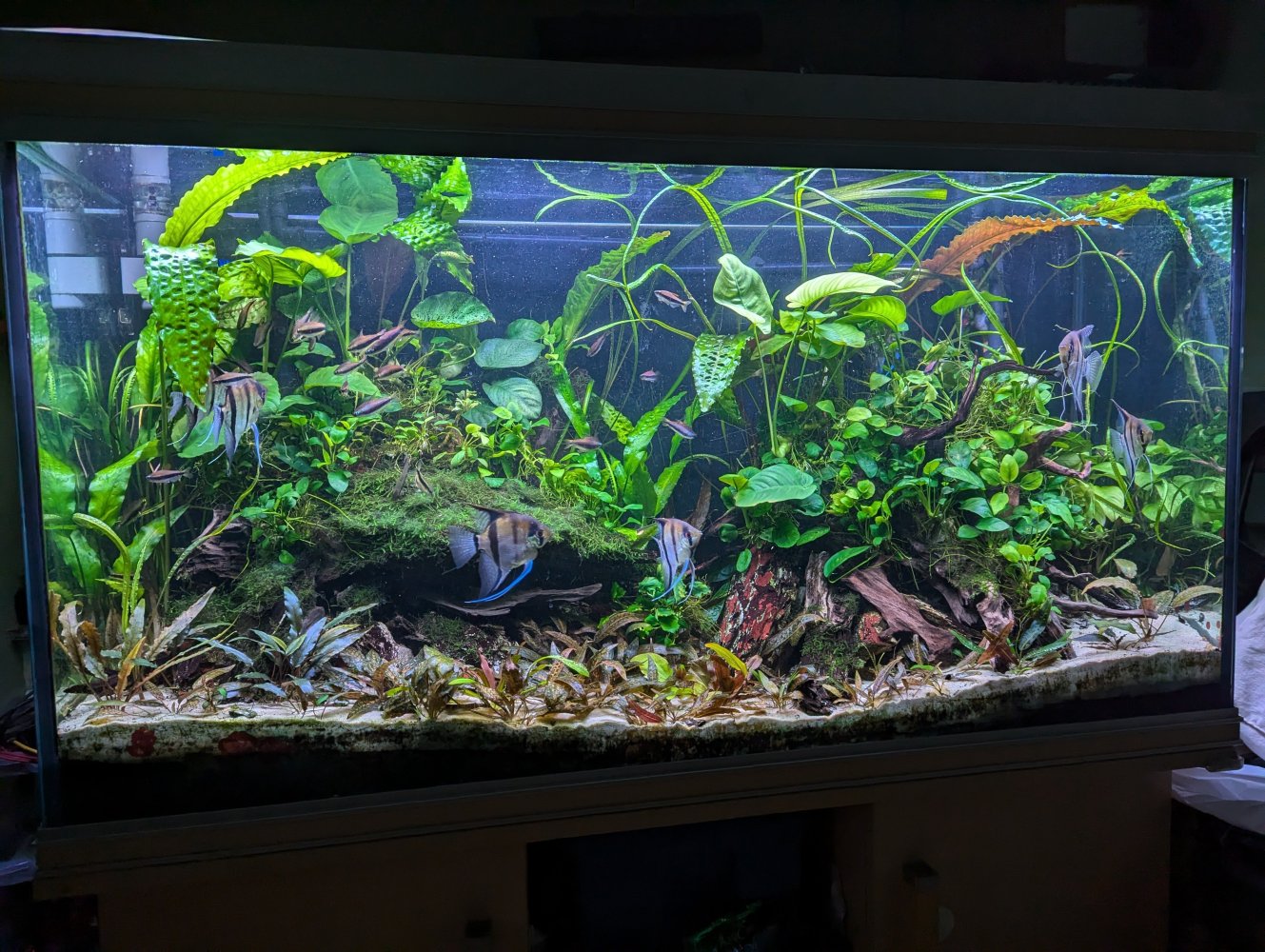curlingmom
New Member
Should I empty all and start over? Or is it not as dangerous a set up as I am told?
I have topped a bagged substrate with 2-3 cm. chiclid sand.
(Do not remember the name of the substrate. It was a gift. Something amazonian-ish. Texture and color as wet: grey clay)
Along the edges of the sand I have covered the bags with substrate 5 cm.
Now I lam told that debris sinking into it it could create pockets of toxic gasses lethal to the fish if released.
In the planted areas afterwarsd have the sand given a bit more structure by adding a few handfulls of 3-4 mm. grit.
Also to help plants root better.
I clean with a light hand once a week, change apprx 20-30% water, add a 2-3 dried, brown walnut leaves.
Give mainly frozen food, "oat meal worms" (english name?) and a sinking cory tablet.
(I hope the corys get any of the tablet given the amanos and hrimps.)
+ occational shrimp sticks + a pinch of montmorolite clay.
The tank balances nicely but after I have begun feeding "oat meal worms" the bottom area just below the feeding flap have begund to take on a fuzzy-mushy and grey look inbetween the weekly cleaning.
Is this due to uneaten, dead worms? Or is it deposits of "oatmeal soup" that might tag along with a scoop from the sides of their breeding box?
If so. What would you do? Stop feeding the worms?
(I prefer the worms as live food to prevent importing diseases and pests from the half dead - and quite expensive - store bought live food.)
Thank you in advance for any input you may have to my many questions.
Kind regards
Practical info:
120 l Tank matured for two months.
temperature apprs: 21 C
Populated for i guess three months now.
Plants: various cryptocorynes, bucephalandras, anubias and amazonian swords, banana lily, aponogeton ulvaeus, schismatoglottis prietoi . + frogbite + a free floating vrey green greedy plant.
Fish: All very small.
7 amandae + one bloodfinn tetra having hijacked the group at the store
5 Yellow finned White mountain Cloud Minnows
9-11 Pygmy corydoras
5 amanos
6 Celestian Pearl Danios
unknown hord of ghost shrimps.
10 tropica fertilizer in capsules added. Probably needs 10 by now.
I have topped a bagged substrate with 2-3 cm. chiclid sand.
(Do not remember the name of the substrate. It was a gift. Something amazonian-ish. Texture and color as wet: grey clay)
Along the edges of the sand I have covered the bags with substrate 5 cm.
Now I lam told that debris sinking into it it could create pockets of toxic gasses lethal to the fish if released.
In the planted areas afterwarsd have the sand given a bit more structure by adding a few handfulls of 3-4 mm. grit.
Also to help plants root better.
I clean with a light hand once a week, change apprx 20-30% water, add a 2-3 dried, brown walnut leaves.
Give mainly frozen food, "oat meal worms" (english name?) and a sinking cory tablet.
(I hope the corys get any of the tablet given the amanos and hrimps.)
+ occational shrimp sticks + a pinch of montmorolite clay.
The tank balances nicely but after I have begun feeding "oat meal worms" the bottom area just below the feeding flap have begund to take on a fuzzy-mushy and grey look inbetween the weekly cleaning.
Is this due to uneaten, dead worms? Or is it deposits of "oatmeal soup" that might tag along with a scoop from the sides of their breeding box?
If so. What would you do? Stop feeding the worms?
(I prefer the worms as live food to prevent importing diseases and pests from the half dead - and quite expensive - store bought live food.)
Thank you in advance for any input you may have to my many questions.
Kind regards
Practical info:
120 l Tank matured for two months.
temperature apprs: 21 C
Populated for i guess three months now.
Plants: various cryptocorynes, bucephalandras, anubias and amazonian swords, banana lily, aponogeton ulvaeus, schismatoglottis prietoi . + frogbite + a free floating vrey green greedy plant.
Fish: All very small.
7 amandae + one bloodfinn tetra having hijacked the group at the store
5 Yellow finned White mountain Cloud Minnows
9-11 Pygmy corydoras
5 amanos
6 Celestian Pearl Danios
unknown hord of ghost shrimps.
10 tropica fertilizer in capsules added. Probably needs 10 by now.


